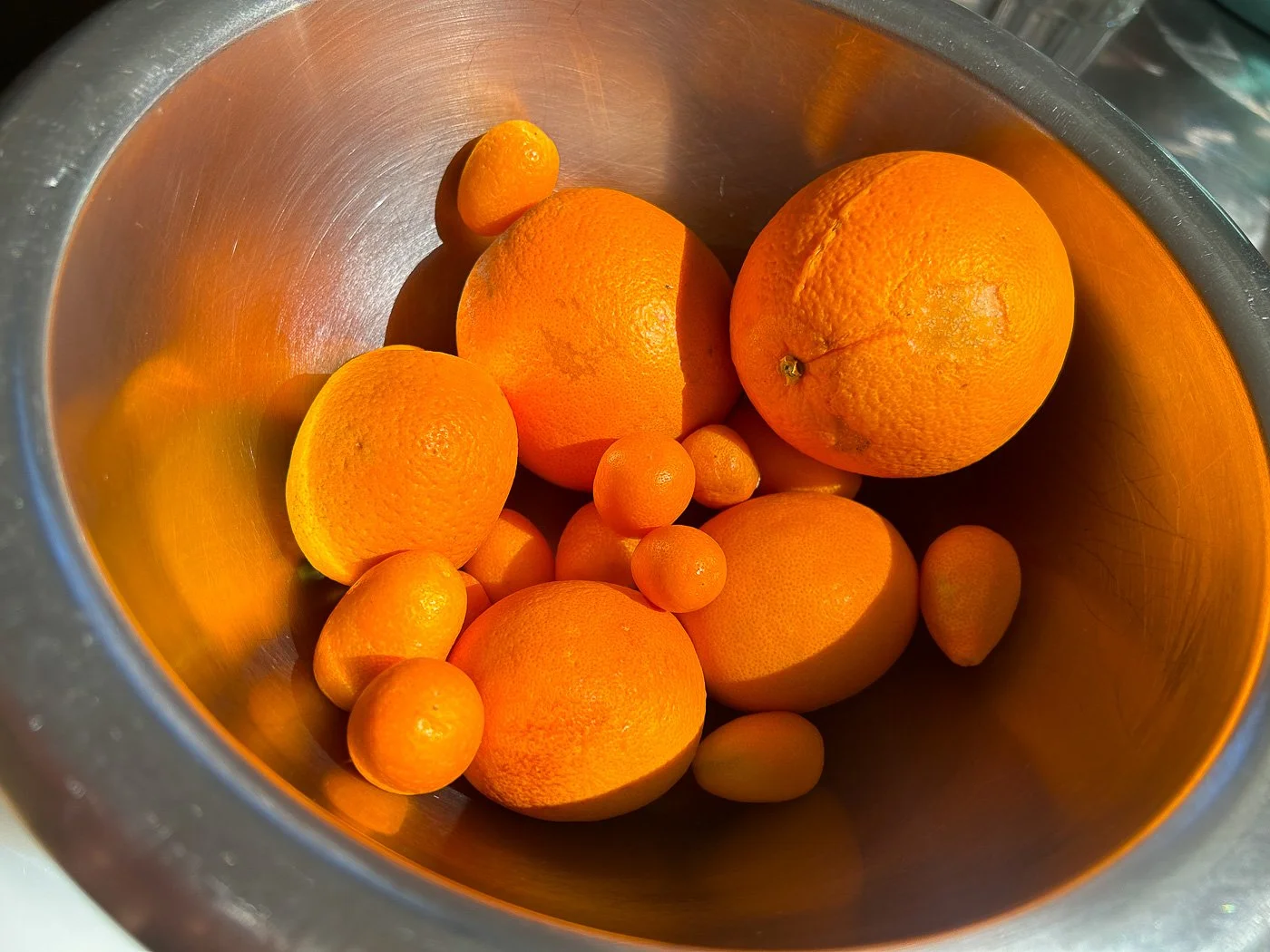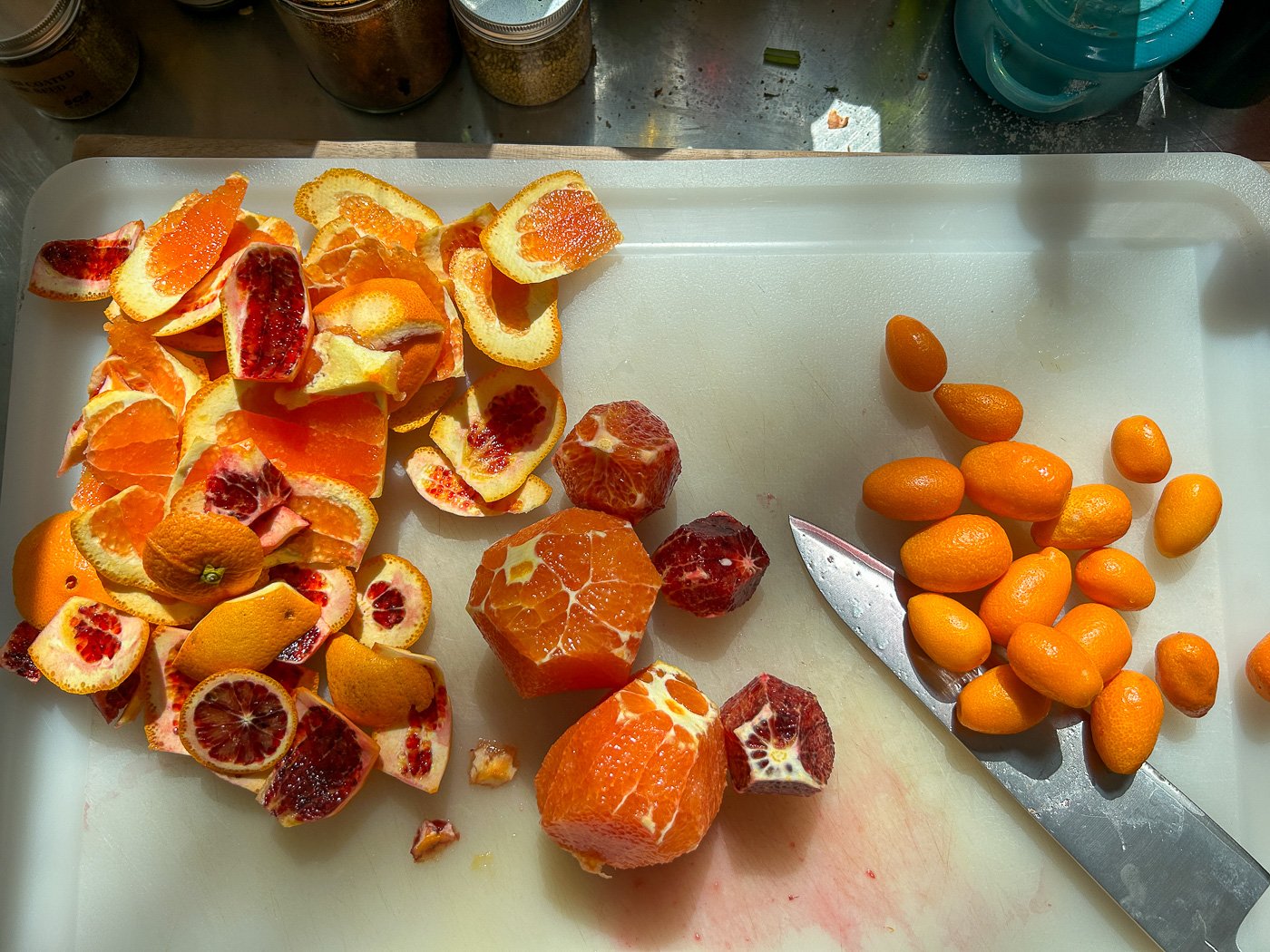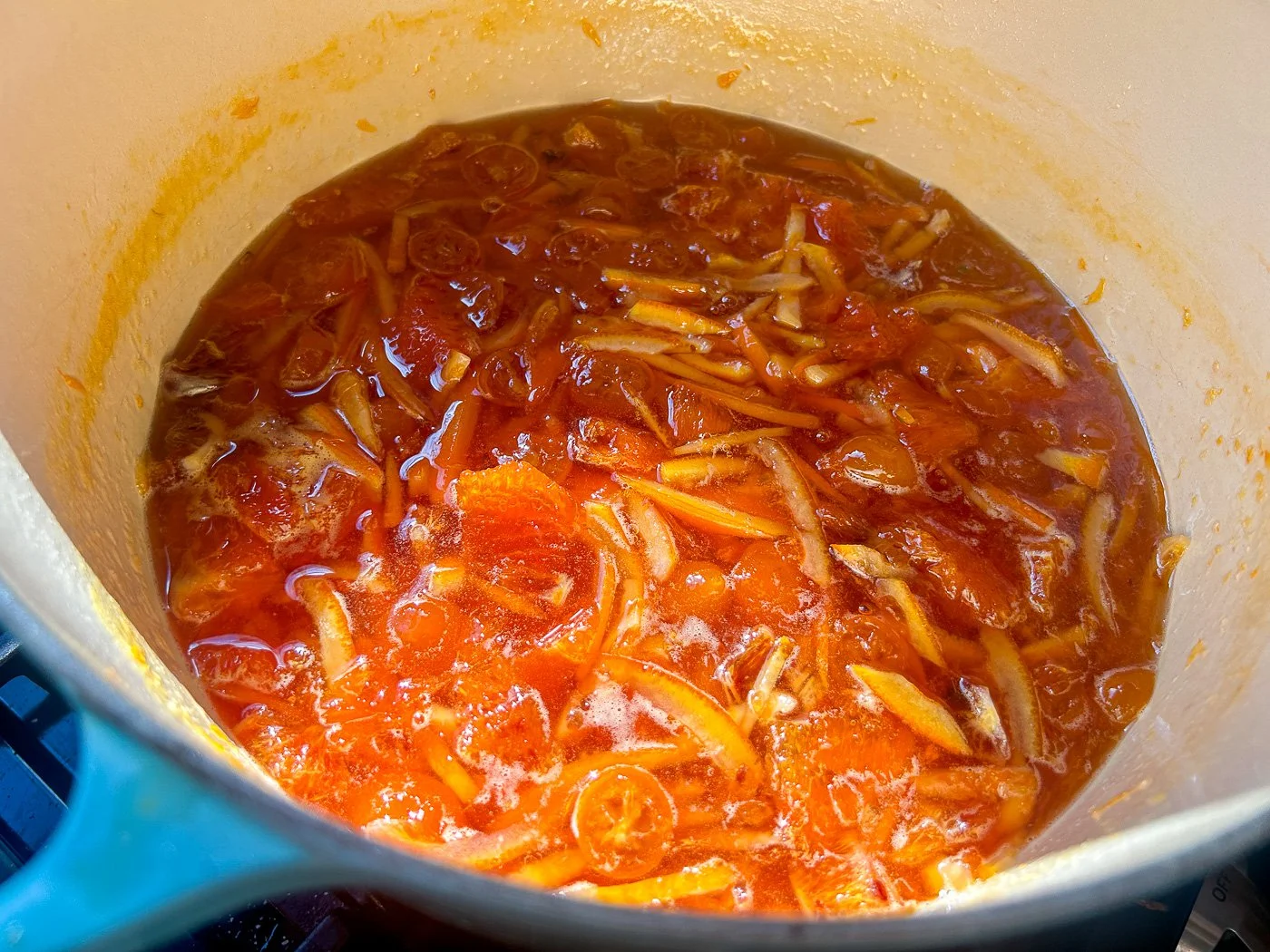Cara Cara, Blood Orange, and Kumquat Marmalade
Ever since I saw Paddington 2 (a seriously great movie), I’ve wanted to make orange marmalade. The problem was that every recipe that I read involved letting the fruit soak overnight. Overnight! Does Paddington let the fruit sit overnight in the movie when he has to feed all those prisoners? Methinks not. Consequently, I spent some time searching for an instant marmalade recipe and finally hit on one on the Master Class website. This is such a terrific recipe because it’s so simple, you can memorize it.
Ready? Two pounds of citrus + 6 cups water + 4 cups sugar + 1/4 cup lemon juice. That’s it!
Normally Seville oranges are considered the best oranges for marmalade because of their bitterness and sourness — qualities that play neatly off the sugar — but in my fruit bowl this weekend I found Cara Cara oranges (they’re pink on the inside), blood oranges (they’re red on the inside), and kumquats. I weighted out two pounds worth, then got to work.
Step one: cut the rind and pith off of the fruit. Don’t worry if yours isn’t perfect (mine certainly isn’t!): everything’s going into the pot eventually. Then get to slicing. Slice the rind into 1/4 inch lengths, cut the fruit in half and slice it into 1/2-inch slices, and slices the kumquats. If you find any seeds along the way, throw them away or do what you’re supposed to do — put them in cheesecloth and throw them into the pot for some extra pectin. Did I do that? I did not.
Doesn’t that look gorg? I could put my bathing suit on and jump right in, though there isn’t any water in there yet. Let’s add some. Six cups, please.
Then it’s time for sugar. You need a lot of sugar to make marmalade — them’s just the rules. So four cups of sugar, make your entrance.
Add 1/4 cup lemon juice, then crank up the heat, bring it to a boil, lower to an active simmer and cook for 90 minutes or until a thermometer says 220. At that point we do what’s called the wrinkle test. You should have a small plate in the freezer (sorry, should’ve told you sooner); dollop some of the marmalade on to the plate. Let it cool for a second and then push it with your finger. If you see wrinkles, you’ve got marmalade.
I should say here that I made the mistake of putting this into jars when I didn’t really pass the wrinkle test. You’ll know you’ve failed the wrinkle test if the marmalade stays super liquidy after sitting for a while. Don’t worry — you can do what I did. Which was essentially to put everything back into the pot, bring it back to a boil, and cook for another 5 to 10 minutes until I absolutely, without question, passed the wrinkle test.
This may be the only time in your life where you actually want wrinkles.
As for the canning aspect to this, I just ladled everything into clean jars and put the lids on. I don’t expect this to keep at room temperature — I’m storing it in the fridge and I hope we gobble it up over the next month. Truthfully, I’ve never had a problem with jam going bad or making anyone sick as long as I’ve kept it in the fridge. But do your own research. I don’t want to wind up in jail like Paddington! But at least now, if I do, I know how to make marmalade.
Related Posts:







